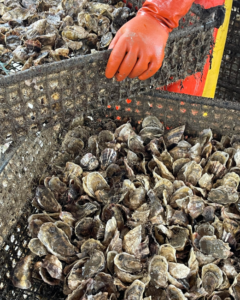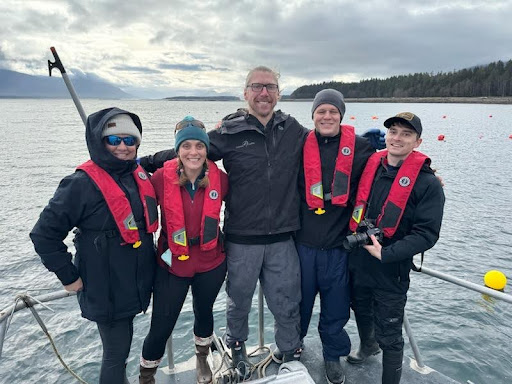
In February and March 2024, NCCOS and NOAA Fisheries conducted a series of workshops in Juneau and Anchorage with the goals of sharing information about NCCOS’ spatial planning approach for Alaska Aquaculture Opportunity Areas (AOAs). The workshops discussed available spatial data within Alaska AOA study areas to further develop an engaged community to inform NOAA’s AOA identification process in Alaska state waters. These workshops provided tribes, communities, and interested parties with an opportunity to engage in the decision-making process regarding the sustainable development of invertebrate and seaweed aquaculture in the region.
The team emphasized the collaborative nature of the AOA identification process, which involves utilizing scientific data, Traditional Ecological Knowledge, and public input to ensure that identified areas are environmentally, socially, and economically appropriate for aquaculture operations. These workshops highlight the importance of incorporating diverse perspectives in the identification of AOAs.

During their visit to Alaska, the NOAA AOA Alaska Team also took the opportunity to explore innovative approaches to aquaculture that are already in operation: Sea Quester Farms and Salty Lady Seafood Company. Sea Quester Farms produces Bull and Sugar kelp and Salty Lady produces oysters; both operate in a manner that complements the native habitat and contributes to a more sustainable food system. These two organizations active in the Alaska aquaculture space demonstrate a commitment to environmental stewardship that aligns closely with the goals of the NOAA AOA Alaska Team as they work to identify AOAs that balance economic development with ecosystem health.
The workshops in Juneau and Anchorage are the latest milestones in the ongoing effort to identify AOAs in Alaska’s state waters. Moving forward, NCCOS will continue to work closely with NOAA Fisheries, the State of Alaska, tribal governments and local stakeholders to develop spatial suitability models for the AOA study areas. These efforts will play a crucial role in growing sustainable aquaculture development in the state of Alaska.

